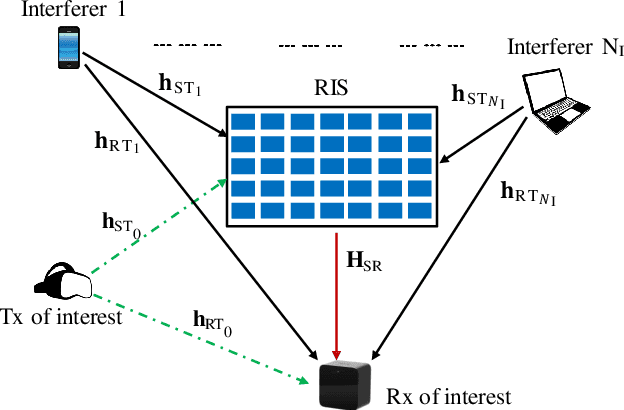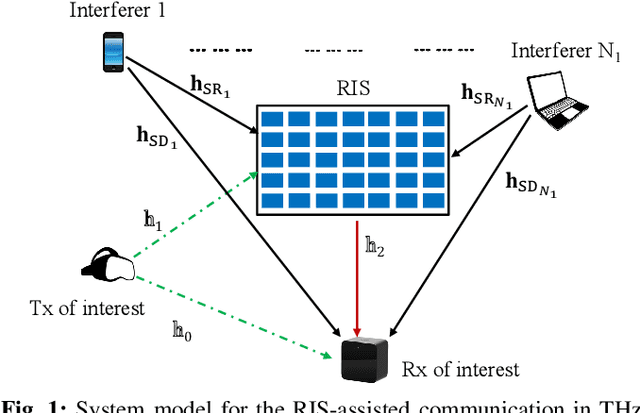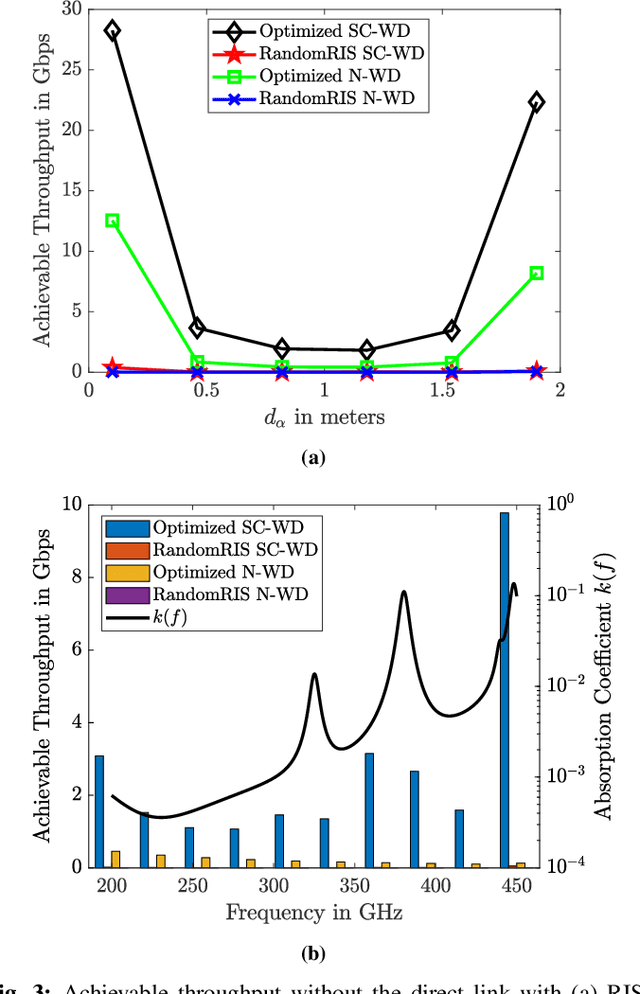Anish Pradhan
Stochastic Geometry Analysis of a New GSCM with Dual Visibility Regions
Aug 18, 2023



Abstract:The geometry-based stochastic channel models (GSCM), which can describe realistic channel impulse responses, often rely on the existence of both {\em local} and {\em far} scatterers. However, their visibility from both the base station (BS) and mobile station (MS) depends on their relative heights and positions. For example, the condition of visibility of a scatterer from the perspective of a BS is different from that of an MS and depends on the height of the scatterer. To capture this, we propose a novel GSCM where each scatterer has dual disk visibility regions (VRs) centered on itself for both BS and MS, with their radii being our model parameters. Our model consists of {\em short} and {\em tall} scatterers, which are both modeled using independent inhomogeneous Poisson point processes (IPPPs) having distinct dual VRs. We also introduce a probability parameter to account for the varying visibility of tall scatterers from different MSs, effectively emulating their noncontiguous VRs. Using stochastic geometry, we derive the probability mass function (PMF) of the number of multipath components (MPCs), the marginal and joint distance distributions for an active scatterer, the mean time of arrival (ToA), and the mean received power through non-line-of-sight (NLoS) paths for our proposed model. By selecting appropriate model parameters, the propagation characteristics of our GSCM are demonstrated to closely emulate those of the COST-259 model.
Novel LoS $β-γ$ THz Channel Unifying Molecular Re-radiation Manifestations
Aug 18, 2023Abstract:This paper introduces a novel line-of-sight (LoS) $\beta-\gamma$ terahertz (THz) channel model that closely mirrors physical reality by considering radiation trapping. Our channel model provides an exhaustive modeling of the physical phenomena including the amount of re-radiation available at the receiver, parametrized by $\beta$, and the balance between scattering and noise contributions, parametrized by $\gamma$, respectively. Our findings indicate a nontrivial relationship between average limiting received signal-to-noise ratio (SNR) and distance emphasizing the significance of $\gamma$ in THz system design. We further propose new maximum likelihood (ML) thresholds for pulse amplitude modulation (PAM) and quadrature amplitude modulation (QAM) schemes, resulting in analytical symbol error rate (SER) expressions that account for different noise variances across constellation points. The results confirm that the analytical SER closely matches the true simulated SER when using an optimal detector. As expected, under maximum molecular re-radiation, the true SER is shown to be lower than that produced by a suboptimal detector that assumes equal noise variances.
A Probabilistic Reformulation Technique for Discrete RIS Optimization in Wireless Systems
Mar 01, 2023


Abstract:The use of reconfigurable intelligent surfaces (RIS) can improve wireless communication by modifying the wireless link to create virtual line-of-sight links, bypass blockages, suppress interference, and enhance localization. However, enabling the RIS to modify the wireless channel requires careful optimization of the RIS phase-shifts. Although discrete RIS is more practical given hardware limitations, continuous RIS phase-shift optimization has attracted significantly more attention than discrete RIS optimization, which suffers from issues like quantization error and scalability. To overcome these issues, we develop a comprehensive probabilistic technique to transform discrete optimization problems into optimization problems of continuous domain probability parameters by interpreting the discrete optimization variable as a categorical random vector and computing expectations with respect to those parameters. We rigorously establish that for the unconstrained case, the optimal points of the reformulation and the original problem coincide. For the constrained case, we prove that the transformed problem is a relaxation of the original problem. We apply the proposed technique to two canonical discrete RIS applications: SINR maximization and overhead-aware rate and energy efficiency (EE) maximization. The reformulation enables both stochastic and analytical interpretations of the original problems, as we demonstrate in our RIS applications. The former interpretation yields a stochastic sampling technique, whereas the latter yields an analytical gradient descent (GD) approach that employs closed-form approximations for the expectation. The numerical results demonstrate that the proposed technique is applicable to a variety of discrete RIS optimization problems and outperforms other general approaches, such as closest point projection (CPP) and semidefinite relaxation (SDR) methods.
Robust Optimization of RIS in Terahertz under Extreme Molecular Re-radiation Manifestations
Oct 02, 2022



Abstract:Terahertz (THz) communication signals are susceptible to severe degradation because of the molecular interaction with the atmosphere in the form of subsequent absorption and re-radiation. Recently, reconfigurable intelligent surface (RIS) has emerged as a potential technology to assist in THz communications by boosting signal power or providing virtual line-of-sight paths. However, the re-radiated energy has either been modeled as a non-line-of-sight scattering component or as additive Gaussian noise in the literature. Since the precise characterization is still a work in progress, this paper presents the first comparative investigation of the performance of an RIS-aided THz system under these two extreme re-radiation models. In particular, we first develop a novel parametric channel model that encompasses both models of the re-radiation through a simple parameter change, and then utilize that to design a robust block-coordinate descent (BCD) algorithmic framework which maximizes a lower bound on channel capacity considering imperfect channel state information. In this framework, the original problem is split into two sub-problems: a) receive beamformer optimization, and b) RIS phase-shift optimization. We also analytically demonstrate the limited interference suppression capability of a passive RIS. Our numerical results also demonstrate that slightly better throughput is achieved when the re-radiation manifests as scattering.
Intelligent Surface Optimization in Terahertz under Two Manifestations of Molecular Re-radiation
Jun 02, 2021


Abstract:The operation of Terahertz (THz) communication can be significantly impacted by the interaction between the transmitted wave and the molecules in the atmosphere. In particular, it has been observed experimentally that the signal undergoes not only molecular absorption, but also molecular re-radiation. Two extreme modeling assumptions are prevalent in the literature, where the re-radiated energy is modeled in the first as additive Gaussian noise and in the second as a scattered component strongly correlated to the actual signal. Since the exact characterization is still an open problem, we provide in this paper the first comparative study of the performance of a reconfigurable intelligent surface (RIS) assisted THz system under these two extreme models of re-radiation. In particular, we employ an RIS to overcome the large pathloss by creating a virtual line-of-sight (LOS) path. We then develop an optimization framework for this setup and utilize the block-coordinate descent (BCD) method to iteratively optimize both RIS configuration vector and receive beamforming weight resulting in significant throughput gains for the user of interest compared to random RIS configurations. As expected, our results reveal that better throughput is achieved under the scattering assumption for the molecular re-radiation than the noise assumption.
 Add to Chrome
Add to Chrome Add to Firefox
Add to Firefox Add to Edge
Add to Edge